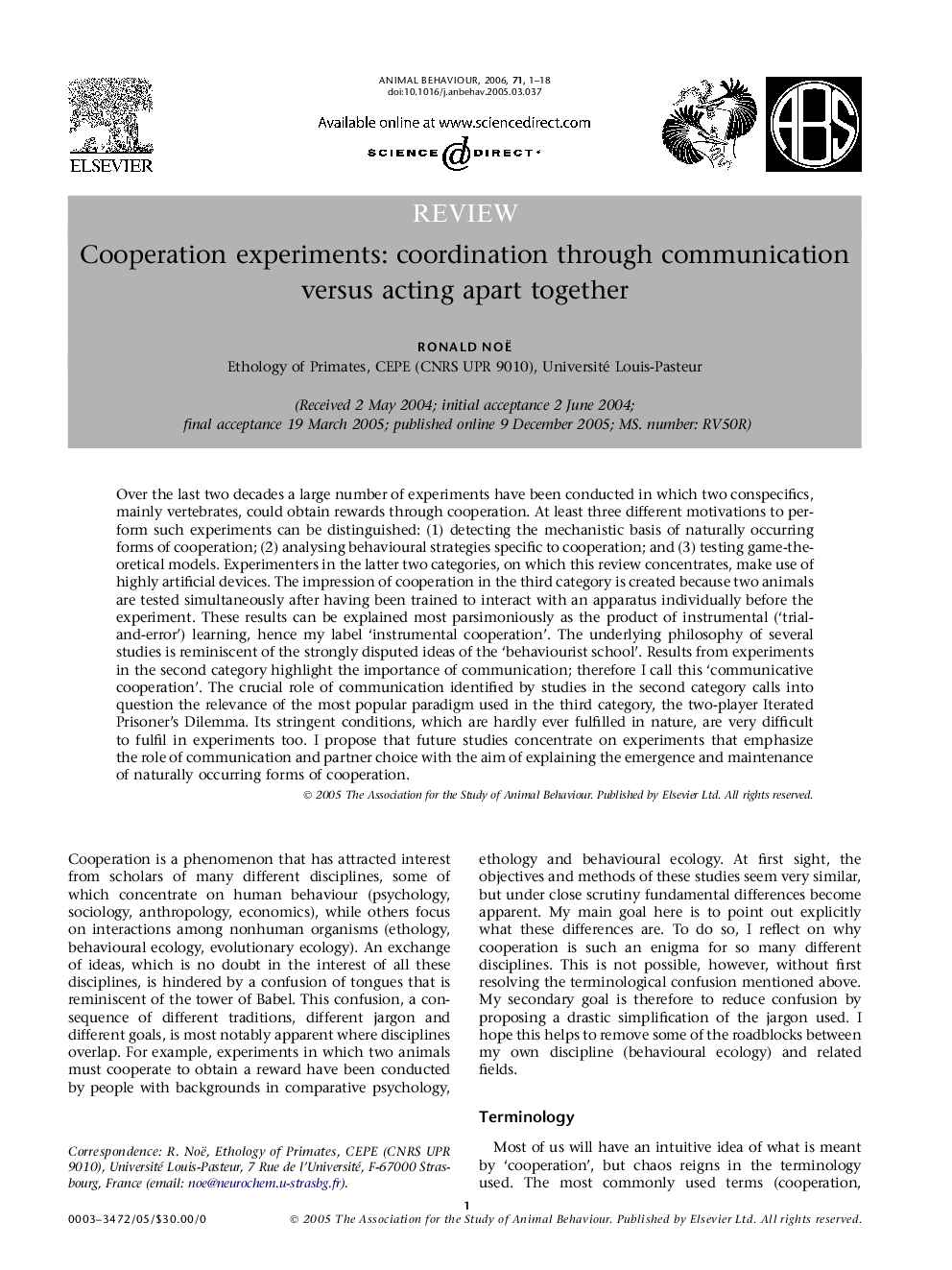| Article ID | Journal | Published Year | Pages | File Type |
|---|---|---|---|---|
| 2418688 | Animal Behaviour | 2006 | 18 Pages |
Over the last two decades a large number of experiments have been conducted in which two conspecifics, mainly vertebrates, could obtain rewards through cooperation. At least three different motivations to perform such experiments can be distinguished: (1) detecting the mechanistic basis of naturally occurring forms of cooperation; (2) analysing behavioural strategies specific to cooperation; and (3) testing game-theoretical models. Experimenters in the latter two categories, on which this review concentrates, make use of highly artificial devices. The impression of cooperation in the third category is created because two animals are tested simultaneously after having been trained to interact with an apparatus individually before the experiment. These results can be explained most parsimoniously as the product of instrumental (‘trial-and-error’) learning, hence my label ‘instrumental cooperation’. The underlying philosophy of several studies is reminiscent of the strongly disputed ideas of the ‘behaviourist school’. Results from experiments in the second category highlight the importance of communication; therefore I call this ‘communicative cooperation’. The crucial role of communication identified by studies in the second category calls into question the relevance of the most popular paradigm used in the third category, the two-player Iterated Prisoner's Dilemma. Its stringent conditions, which are hardly ever fulfilled in nature, are very difficult to fulfil in experiments too. I propose that future studies concentrate on experiments that emphasize the role of communication and partner choice with the aim of explaining the emergence and maintenance of naturally occurring forms of cooperation.
